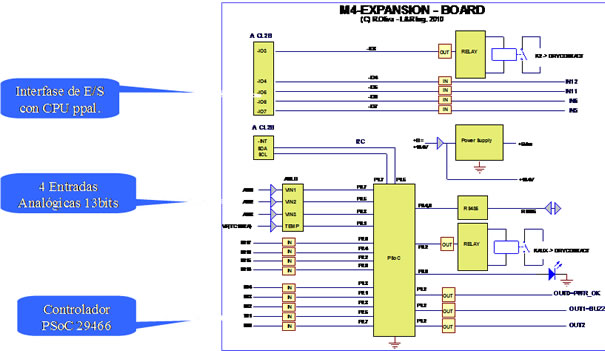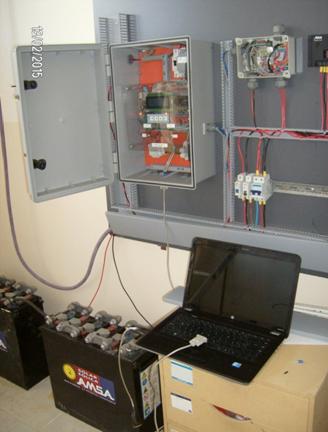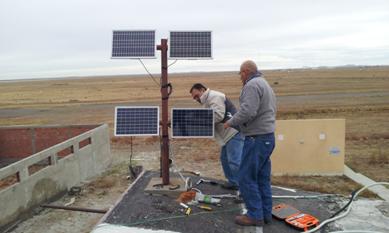Using similar hardware as the turnkey systems, the design and construction of data acquisition systems for community, research or academic projects is offered, using open licenses and based on configurations similar to those shown in Figure 1.1 which uses SD memory storage and possibility of voltage, current and/or power measurements, as well as an optional ambient measurement METEO module for wind, temperature and barometric pressure.

Based on this hardware, an OpenDLogger generic application in C language is offered, which can be modified in C (base compiler is Codevision AVR 3, by HP Infotech, but can be ported to other compilers). Example system is based on renewable energy systems, and can include additional analog channels both in 13- or 10- bit resolution. A guide for evaluation of uncertainties is also offered.
For the M4/E expansion module (Figure 1.2) an example program written in C is offered, using the freely available PSoC Designer software (www.cypress.com) is offered to control up to 13 discrete inputs (LED indicated, not optocoupled), two dry/contact relay outputs and 3 TTL/level outputs, one of which can be configured to activate an on-board buzzer.


An example of this kind of system is the one shown in Figure 1.3, for monitoring a low power PV array (SISMED-FV), at AEA / UNPA (Universidad Nacional de la Patagonia Austral) in Rio Gallegos, Santa Cruz. The system is based on the CL2bm1 (CPU), and M4/E (auxiliary inputs) boards, plus low-current ACS71x Hall-effect sensors (Figure 1.4). The front panel construction is shown in Figure 1.5. The program has been modified by the Alternative Energy group to suit the sensing of adjustable angle panels ( 4 x 20 W, on a 24 V system ).



